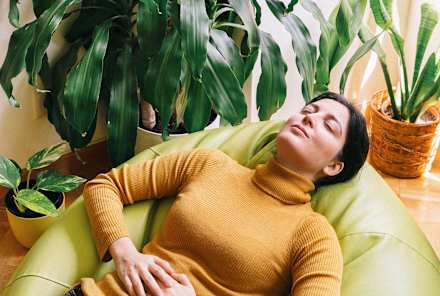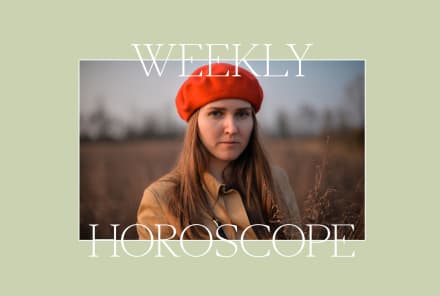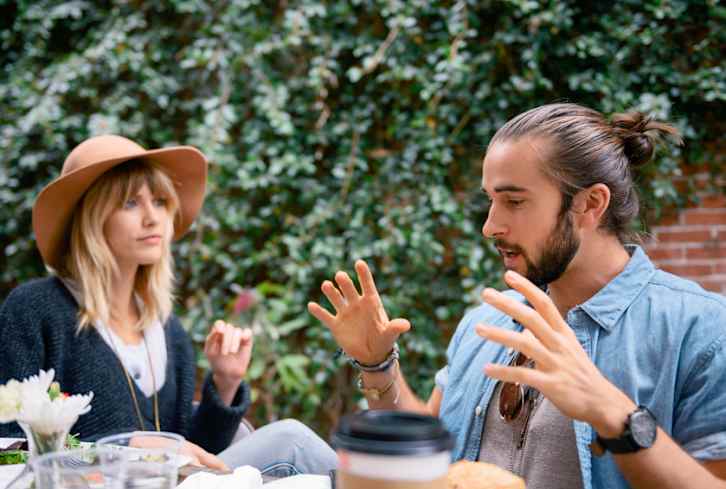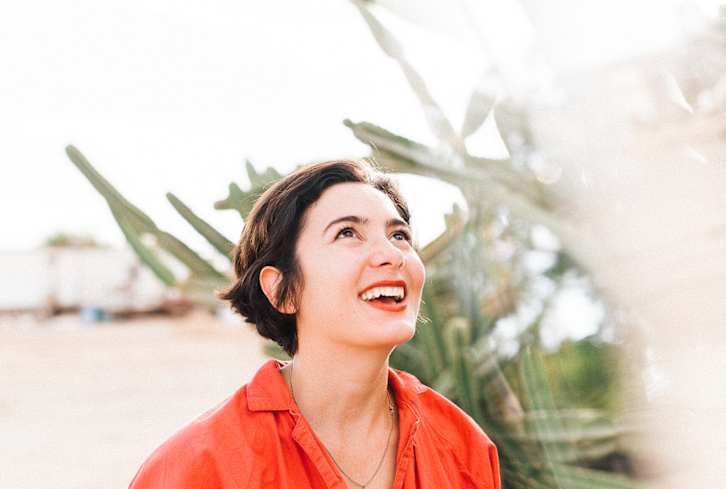Advertisement
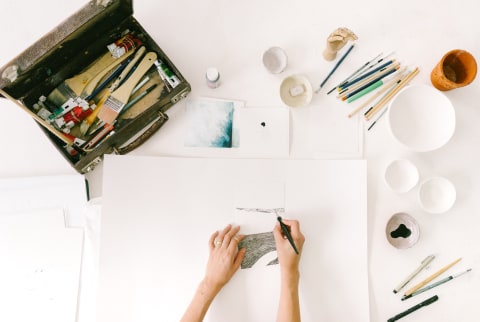
Use what you already have.
One of my art heroes was a nun. In the 1960s, Sister Mary Corita Kent was an art teacher at Immaculate Heart College in Los Angeles. Inspired by a show of Andy Warhol's work, she started screen printing. She would take pictures of advertisements and signs all over the city—the stuff we usually think of as junk, clutter, and eye pollution—and she would transform those things by taking them out of their context, adding them to handwritten lyrics from pop songs and Bible verses, and printing them as if they were religious messages. She turned a bag of Wonder Bread into a message about taking communion. She stole the General Mills slogan, "The Big G Stands For Goodness," and made the "G" from the logo seem like it was referring to God. She cut the Safeway logo into two separate words, and it became a sign showing the path of salvation. Finding God in all things is one of the tasks of the believer, and Kent found God in advertising, of all things. Kent took the man-made landscape of Los Angeles—not necessarily the first place you'd look for beauty—and she found the beauty in it.
Kent said she made common things "uncommon." (She thought uncommon was a better term than art.) "I don't think of it as art," she said. "I just make things I like bigger." She had a particular way of looking at the ordinary world, and she taught this way of looking to her students. In one of her assignments, she had students create what she called a "finder"—a piece of paper with a rectangle cut out of it to simulate a camera viewfinder. She would lead her students on field trips, teaching them to crop the world, to "see for the sake of seeing" and discover all the things that they'd never bothered to notice.
Make the ordinary extraordinary.
Really great artists are able to find magic in the mundane. Most of my favorite artists made extraordinary art out of ordinary circumstances and materials. Harvey Pekar spent the majority of his working life as a file clerk at the VA hospital in Cleveland, collecting stories and scribbling them into stick-figure scripts that would eventually become the comics in his masterpiece, American Splendor. Emily Dickinson stayed in her room and wrote her enduring poems on the backs of leftover envelope scraps. The Dada artist Hannah Höch used the sewing patterns from her day job in her collages. Sally Mann took gorgeous photos of her three children playing on their farm in Virginia. (Her friend, the painter Cy Twombly, used to sit outside the Walmart in Lexington and people watch for inspiration.)
It is easy to assume that if only you could trade your ordinary life for a new one, all your creative problems would be solved. If only you could quit your day job, move to a hip city, rent the perfect studio, and fall in with the right gang of brilliant misfits! Then you'd really have it made.
All this is, of course, wishful thinking. You do not need to have an extraordinary life to make extraordinary work. Everything you need to make extraordinary art can be found in your everyday life.
René Magritte said his goal with his art was "to breathe new life into the way we look at the ordinary things around us." This is exactly what an artist does: By paying extra attention to their world, they teach us to pay more attention to ours. The first step toward transforming your life into art is to start paying more attention to it.
Slow down and draw things out.
It's impossible to pay proper attention to your life if you are hurtling along at lightning speed. When your job is to see things other people don't, you have to slow down enough that you can actually look.
In an age obsessed with speed, slowing down requires special training. After art critic Peter Clothier discovered meditation, he realized how little he was actually looking at art: "I would often catch myself spending more time with the wall label in a museum than with the painting I was supposed to be looking at!" Inspired by the slow food and slow cooking movements, he started leading "One Hour/One Painting" sessions in galleries and museums, in which he invited participants to gaze at a single artwork for one full hour. Slow looking caught on, and now several museums across the country hold slow-looking events. The ethos is summed up on the Slow Art Day website: "When people look slowly...they make discoveries."
Slow looking is great, but I always need to be doing something with my hands, so drawing is my favorite tool for forcing myself to slow down and really look at life. Humans have drawn for thousands of years—it's an ancient practice that can be done with cheap tools available to everyone. You don't have to be an artist to draw. You just need an eye or two.
"Drawing is simply another way of seeing, which we don't really do as adults," says cartoonist Chris Ware. We're all going around in a "cloud of remembrance and anxiety," he says, and the act of drawing helps us live in the moment and concentrate on what's really in front of us.
Because drawing is really an exercise in seeing, you can suck at drawing and still get a ton out of it. In a blog post about picking up the habit of sketching later in his life, film critic Roger Ebert wrote, "By sitting somewhere and sketching something, I was forced to really look at it." He said his drawings were "a means of experiencing a place or a moment more deeply."
Drawing doesn't just help you see better; it makes you feel better. "An artist using a sketchbook always looks like a happy person," Ebert observed. "It's sublime," said author Maurice Sendak. "It's magic time, where all your weaknesses of character, the blemishes of your personality, whatever else torments you, fades away, just doesn't matter."
To slow down and pay attention to your world, pick up a pencil and a piece of paper and start drawing what you see. (The pencil's best feature is that it has no way of interrupting you with texts or notifications.) You might find that this helps you discover the beauty you've missed.
Watch Next
Enjoy some of our favorite clips from classes
Enjoy some of our favorite clips from classes
What Is Meditation?
Mindfulness/Spirituality | Light Watkins
Box Breathing
Mindfulness/Spirituality | Gwen Dittmar
What Breathwork Can Address
Mindfulness/Spirituality | Gwen Dittmar
The 8 Limbs of Yoga - What is Asana?
Yoga | Caley Alyssa
Two Standing Postures to Open Up Tight Hips
Yoga | Caley Alyssa
How Plants Can Optimize Athletic Performance
Nutrition | Rich Roll
What to Eat Before a Workout
Nutrition | Rich Roll
How Ayurveda Helps Us Navigate Modern Life
Nutrition | Sahara Rose
Messages About Love & Relationships
Love & Relationships | Esther Perel
Love Languages
Love & Relationships | Esther Perel
What Is Meditation?
Box Breathing
What Breathwork Can Address
The 8 Limbs of Yoga - What is Asana?
Two Standing Postures to Open Up Tight Hips
How Plants Can Optimize Athletic Performance
What to Eat Before a Workout
How Ayurveda Helps Us Navigate Modern Life
Messages About Love & Relationships
Love Languages
Advertisement
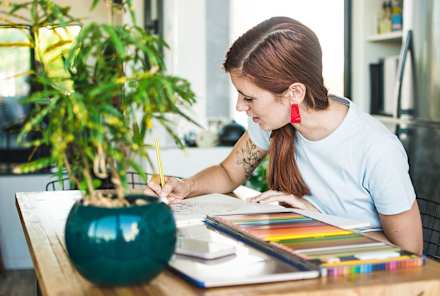
This Inner Wound Can Block Your Creativity — Here's How To Heal It
Tanya Carroll Richardson

This Inner Wound Can Block Your Creativity — Here's How To Heal It
Tanya Carroll Richardson

This Inner Wound Can Block Your Creativity — Here's How To Heal It
Tanya Carroll Richardson

This Inner Wound Can Block Your Creativity — Here's How To Heal It
Tanya Carroll Richardson


